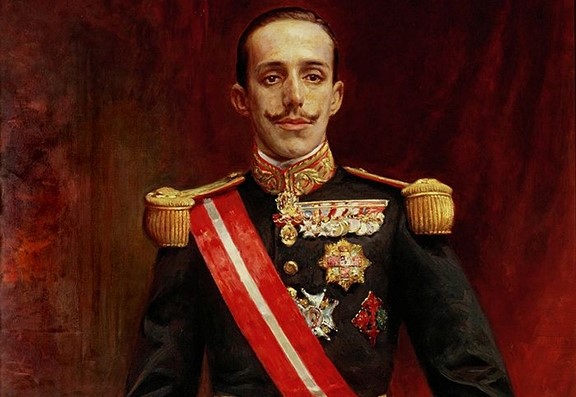
Spanish Influenza in Australia
The Story as it Unfolded in Local Newspapers
Spanish Influenza in Australia
Local newspapers told the story of the Spanish influenza in Australia. Keeping people abreast of developments, dramas and deaths the newspapers performed a vital public service. There were reports on cases in Australia and overseas, official and unofficial precautions, medical and mysterious ‘cures’, government actions and inactions. And of course reports on politics – federal vs state, state vs state, government officials vs health professionals, border closures and a mutiny.
There are thousands and thousands of articles available on Trove in relation to ‘Spanish influenza’, ‘Spanish flu’ or Pneumonic influenza. Finding it impossible to read every article, the headlines and points used in this story are the ones that ‘jumped from the pages’ and they relate mainly to Victoria and NSW. Some points are my interpretations and/or comments. I hoped to build a picture of how the disease developed, how the government reacted and what the public was told in the media.
Spanish Influenza on the WWI Battlefields
As if the battlefield horrors of WW1 weren’t bad enough and then along came Spanish flu, a deadlier and more pervasive enemy. During battles trenches provided some protection to troops from the enemy outside, but in the months before peace was declared the trenches provided no protection to troops from the enemy within. The trenches in fact provided a perfect environment for the new enemy to advance. (See post: https://www.historysnoop.com/spanish-flu-not-so-spanish/)
Spanish flu spread like wildfire through the battlefield trenches affecting fighting power in both the Allied and German camps. Millions of soldiers were incapacitated by the disease and rendered useless on the battlefield, while there are estimates of over 100,000 deaths. Wever and Bergen believe Spanish flu had a profound impact on both the military apparatus and the individual soldier but less on the course of the war. (Wever & Bergen) War correspondents Philip Gibbs and Perry Robinson suggested in cables that influenza may have delayed the German final offensive in 1918. (Goulburn Evening Penny Post, 9 July 1918, p2 & Maryborough and Dunolly Advertiser, 15 July 1918, p2)
Spanish Influenza in Australia – Was Australia Prepared?
Most countries were unprepared to fight a deadly influenza pandemic in the final months of WW1 and in the wake of peace. Australia was no exception. Even though Australia was one of the last countries to be hit by the Spanish flu pandemic, Australia was still ill prepared. News came in daily of how the disease was trajecting around the world with reports describing horrific scenes of death and despair. But Australia was not on a ready ‘war footing’ to meet the threat head on.
The war caused massive disruption to people’s lives, societies and economies around the world even those countries far away from the fields of conflict like Australia.
Shortage of Doctors and Nurses
With thousands of Australian doctors, nurses and other medical personnel deployed overseas from Gallipolli until after the war https://www.awm.gov.au/visit/exhibitions/1918/medical) health services on the home front were stretched. There was an all-round state of ill-preparedness despite the forewarnings of what was to come in daily news feeds from overseas.
When cases of pneumonic influenza – still not identified as Spanish influenza – started spreading, hospitals started filling and nurses and doctors were in short supply, alarm bells started ringing. Whether it was Spanish influenza or not, Australia was not ready for a serious medical crisis after the War to end all wars.
Confusing Messages in Victoria
Reading through pages of newspaper items in the early days of the pandemic one gets the impression that some authorities didn’t want to know about it. You detect conflict brewing in Victoria when the superintendents of Melbourne’s two largest hospitals, the Melbourne (Dr McMeekin) and St Vincent’s (Dr O’Grady) say the disease is “treacherous,” and the severity “is intensifying” and the Chief of Victoria’s Heath Department (Dr Robertson) responds with an offhand reaction:
“ … naturally the superintendents of the two large hospitals were governed in their opinions by their peculiar experiences. They were in the centres of the attack. The only worst cases were now taken into hospitals. That naturally engendered a tendency among hospital superintendents to regard the virulence as increasing.” (Geelong Advertiser, 5 Feb, 1919, p3)
Disheartening words for the doctors working on the front line especially when their hospitals are at capacity or overflowing. And confusing for the general public. Who do you believe?
Victoria Didn’t Play the Game
Victoria’s intransigence, procrastination, bull headedness – call it what you like – in reporting and declaring the State infected with pneumonic influenza in January 1919 caused a crisis within the young Federation. NSW blamed Victoria for allowing a returned soldier to travel to Sydney, unknowingly incubating the disease.
The soldier became seriously ill and was hospitalised at the Randwick Military Hospital. Before long the disease spread from his hospital bed and throughout NSW. Victorian public health officials knew that pneumonic influenza was in the state while the soldier was there but seemingly turned a blind eye.
Declaring States Infected
NSW was officially declared an infected state on 27 January 1919. The following day 28 January 1919, Victoria was declared infected. It should have been the other way around. A week later on 5 February South Australia was declared infected. Other states were declared much later – Queensland on 16 May; Western Australia on 20 June and Tasmania on 20 August 1919.
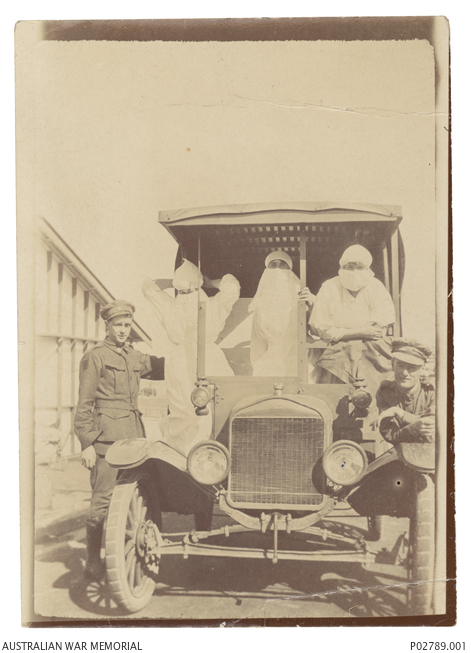
Spanish Influenza in Australia – Border Closures
Each State ended up introducing their own border controls and arrangements for managing and containing outbreaks. NSW shut its border with Victoria and then South Australia. Queensland closed its border with NSW and Western Australia closed its border with South Australia. Tensions were so high that Western Australia impounded the transcontinental train. Cooperative federalism collapsed and eventually the Commonwealth temporarily withdrew from the agreement on 11 February 1919. (Armidale Express and New England General Advertiser, 28 Jan 1919, p2)
Perhaps the tensions between the States and between the States and the Federal government can be explained by the ‘youth’ of Federation. It was less than twenty years since the six British colonies agreed to unite and form the Commonwealth of Australia. Not only that, Melbourne was the seat of Commonwealth Parliament and the Victorian government possibly had more sway with federal government officials than other States and perhaps, more specifically with quarantine officials. It wasn’t until 1927 that the Commonwealth Parliament met in the ‘new’ capital of Australia, Canberra.
“If the Federal capital had been situated anywhere else than in Melbourne there is reason to believe the Commonwealth attitude would have been of a different order. To this depth has our political administration sunk. Whatever Mr. Watt (Acting Prime Minister) may do now, he can rest assured that he will have the bulk of the people; of the Commonwealth against him in this matter.” ( Daily Examiner, Grafton, NSW, Thursday 6 February 1919, p4)
Influenza Gripped Australia in July 1918
Influenza seemed to be everywhere in Australia from around July 1918 starting in a military camp in Broadmeadows, Victoria. Never identified as Spanish flu but described as Spanish flu by members of the public, some of the soldiers and by some newspapers. Military officials remained tight lipped during the outbreak.
As it spread many doctors said it was a severe and more virulent seasonal flu. Some called it a severe cold. But it struck with ferocity and thousands of people became severely ill. It also struck when Spanish flu was gaining a stronghold in England, Europe and the battlefields of the Western Front. There was certainly a nervousness about.
Influenza victims flooded hospitals and the infection soon spread from the cities to country regions. But at least this influenza in Australia was occurring when you would expect influenza to occur, in the winter months. Overseas the deadly Spanish variety was occurring in the unseasonal summer months.
Spanish Influenza in Australia – Restrictions Imposed and Precautions
Each State Government imposed restrictions on the public including:
- Closing of schools, cinemas, theatres and other places of entertainment.
- Cancellation of horse race meetings.
- Closing hotels or restricting patronage.
- Mask wearing while not encouraged initially soon became mandatory in some areas and circumstances. In Victoria masks were discarded on 1 March 1919 and resurrected on 28 March 1919.
- Inoculations were recommended and local councils established depots for that purpose. NSW authorities closed depots in mid January thinking the epidemic was over but reopened them as the disease appeared in the community.
The precautions and restrictions were eased prematurely in both NSW and Victoria
Timeline of Spanish Influenza in Australia
How the Australian Public Saw Spanish Influenza Unfold From the First Overseas News Cable on 1 June 1918
1918
1 June – A “mysterious malady” later called Spanish influenza is spreading throughout Spain and causing alarm
- Forty percent of the population is stricken including King Alfonso XIII
- Not front page news. The item appeared on page 24 of the ‘Australasian’
![]()
Spanish King Alfonso XIII became seriously ill with the mysterious malady affecting 40% of the Spanish population.
24 June – Spanish influenza spreads to England and a flu starts spreading in Melbourne
- Hundreds of cases reported in England. (Riverine Herald)
- Reports of a severe flu attacking areas of Melbourne. Don’t treat lightly doctors warn. (Argus)
26 June – London’s hospitals overflowing with flu victims and the disease spreads to the provinces
- Emergency huts erected in London to cater for the overflow of patients. (Argus)
28 June – Influenza escapes London
- Influenza now raging in provinces forcing the closure of factories and schools. (Newcastle Sun)
3 July – Important war industries and coal production affected in England. Schools shut.
- An aircraft factory has 500 cases; a government repair works 600 and a factory employing 3000 forced to close. (Herald)
- In Newcastle (Eng) some coal mines had 70% of their miners sick. (Herald)
- In Middlesbrough 5000 children affected and schools closed. (Herald)
8 July – Spanish influenza has a disturbing virulence
- Within a fortnight of the first cases in London there were 67 deaths in one week. (Ballarat Courier)
- People seen suddenly collapsing in the streets requiring ambulance transportation to hospital. (Ballarat Courier)
11 July – Ireland hit with influenza
- The epidemic spreads rapidly across Ireland. Belfast experiences 97 deaths in a week. Schools closed across Ireland. (Singleton Argus)
15 July – Spanish influenza rages. Many deaths in Germany
- 1000 German industrial districts affected with many deaths reported daily. 8000 Berlin school children affected. (Herald)
16 Aug – Soldiers at a Victorian military training base stricken with influenza
- Reports emerge of 200 soldiers at Broadmeadows Military Training Camp in Victoria struck with influenza. 10% hospitalised. Worst cases experienced fits followed by loss of consciousness. Some reports said it was a type of Spanish flu.
- Background: The men took ill around 9 August and word started leaking out about a week later of a Spanish flu type illness.
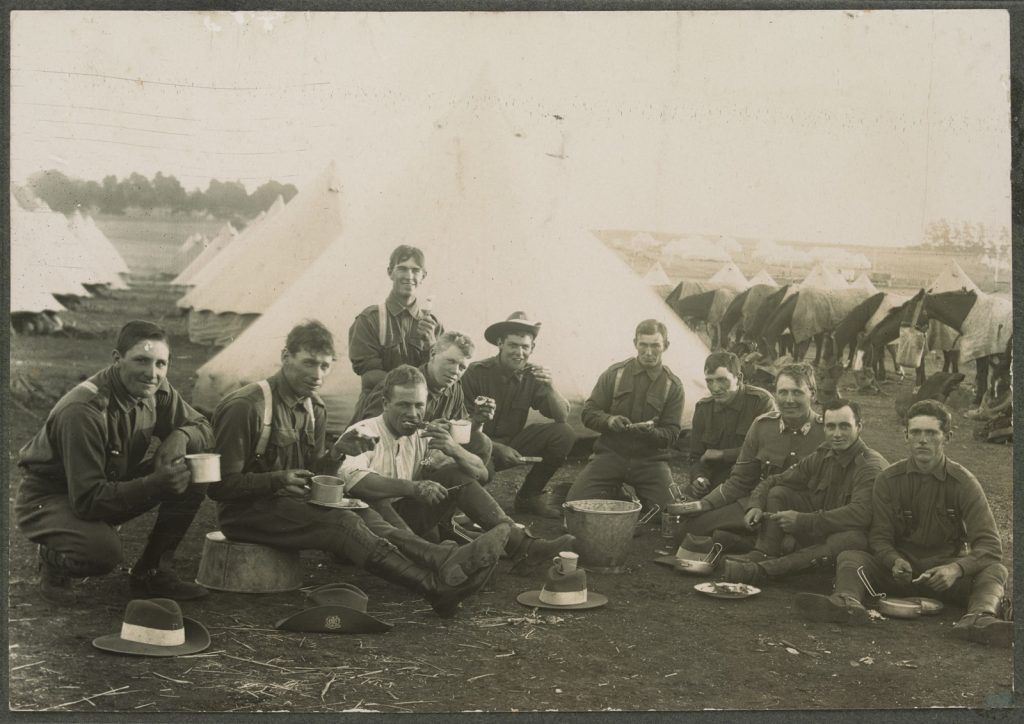
17-19 Aug – Official secrecy surrounds Broadmeadows military camp influenza
- Principal Medical Officer Colonel Sturdee advised Defence Minister, Senator Pearce, that reports of the influenza outbreak, “had been much exaggerated”. (Herald, 17 Aug)
- Col. Sturdie said there was no cause for uneasiness as the epidemic was nothing out of the ordinary. (Herald, 17 Aug)
- Col. Sturdie wouldn’t disclose if there were new cases. (The Age, 19 Aug)
24 Aug – Mildura soldier in convalescent hospital with influenza. Melbourne Hospitals Overflowing
- The Mildura Cultivator reports that one of their own, Hubert Barnett, was in Mont Park Convalescent Hospital ” … recovering from a bad attack of “Flu” the Black or Spanish influenza which is in the camps now.” (Mildura Cultivator)
- Melbourne Hospital overwhelmed by a record number of patients as influenza spreads in the city. (Argus)
31 Aug – Flu spreads in Broken Hill NSW
- Hundreds of citizens affected. Local chemist dispensed a record number of prescriptions for a fortnight (4,172) and 440 in one day.
6 Sept – Not the Spanish flu and Quinine best medicine
- Doctors assert, ” … the current influenza epidemic is not the Spanish importation, but something different.” (Daily Telegraph, 6 Sept 1918, p4)
- Quinine touted as the best preventive and avoiding crowded places the best prevention.
8 Sept – Spanish flu called a myth
- Some Sydney doctors claim the flu in Australia more a case of “nerves” caused by war strain and not Spanish flu. (That went down well!) (Sunday Times)
9 Sept – Flu spreads in Yass NSW
- Reports said the flu was more virulent than any flu epidemic in the past. (Yass Courier)
12 Sept – Hundreds of workers sick in Sydney
- The GPO, banks, insurance companies, ferries and railways hit hard in Sydney outbreak. (Sydney Sun)
15 Sept – Mines closed in Wollongong
- Sick miners force mines closures. 110 men were absent from the South Bulli Colliery. (The Sun)
16 Sept – Influenza epidemic hits Geelong
- “The scourge is attributed to the recent winds, which stirred up the dust and distributed the germs.” (Geelong Advertiser)
17 Sept – Media declares Spanish flu in Australia
- ‘Forbes Advocate’ says prevailing epidemic in Australia is Spanish flu. (Forbes Advocate)
18 Sept – Troopship with deadly influenza aboard
- Deadly influenza strikes troopship with NZ reinforcements. 65 deaths at sea and nine deaths on landing. (Daily Advertiser)
21 Sept – German U Boats spread influenza germs in America
- With Spanish influenza spreading along the Atlantic Coast a new official warning issued in the US saying German U-boats are probably responsible. A Shipping Board official said men landed from German submarines possibly released influenza germs in theatres and churches. Influenza occurred in Spain immediately after the visit of German U-boats. (Sydney Sun)
- Background: This is smoke and dagger. US authorities didn’t want their citizens believing that the influenza epidemic started and spread from the United States. Many believed it may have started in and spread from Camp Funston in Kansas in June 1918.
26 Sept – Federal Government blamed for influenza spread
- Defence Minister, Senator Pearce blamed for not quarantining troop ships. Shiploads of soldiers were “cheerfully” allowed to land at ports throughout the country despite coming straight from influenza affected countries. (Freeman’s Journal)
- Call for a Royal Commission to learn why Australia was not protected from the “microbic invader”. (‘Freeman’s Journal)
- 250,000 Australians currently affected by the flu epidemic.
6 Oct – “Curse of the Spanish flu” in Parramatta
- Influenza raging with the fiercest intensity in the Parramatta district. There’s not a house without a victim. (Sydney Sun)
7 Oct – Influenza in American Military Training Camps
- 100,000 cases reported in American Military camps in the US. (Newcastle Morning Herald)
9 Oct – Flu rages throughout South Africa forcing stricter quarantine measures in Australia
- The flu epidemic in South Africa described as the worst ever with deaths approaching 50,000.
- Some Australian authorities say there is no evidence to suggest Australia has the same flu circulating.
- A quarantine officer believes Australia has a milder form of the flu currently raging in South Africa.
- New rules allowed quarantine medical officers to board incoming vessels 48-24 hours before arrival to examine passengers and crew.
- All vessels from South Africa now quarantined if influenza cases aboard.
12 Oct – Steamship Niagra destined for Australia has flu cases
- The steamship Niagra arrives in Auckland with over 100 cases of influenza. NZ wharfies refuse to work the boat.
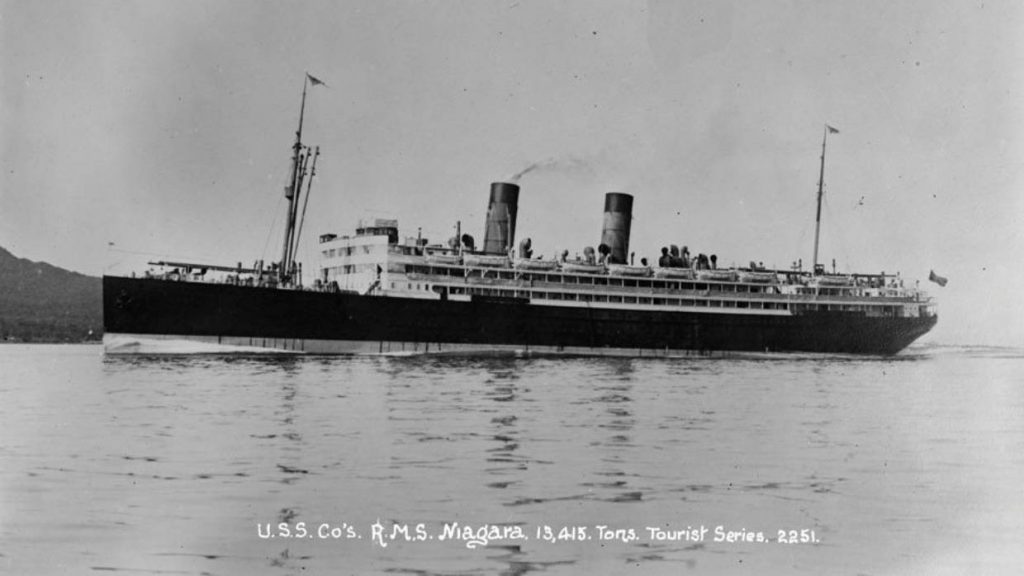
17 Oct – Influenza proclaimed a quarantinable disease
- Commonwealth Government proclaims a) influenza or any septicaemic condition similar to influenza a quarantinable disease and b) South Africa a country affected by influenza.
19 Oct – The steamer Matarum arrives in Darwin with influenza cases
- The Matarum arrives in Port Darwin from Singapore with 50 cases of influenza on board. Authorities are “taking adequate measures to cope with the outbreak.” (Northern Star)
20 Oct – Gas masks the only way to go and kissing to be taboo
- Flu tactics. The six ‘Flu Dont’s’.
24 Oct – Duty of the Influenza patient
- The Director of Quarantine, Dr Cumpston said it was the duty of all infected persons to go to bed immediately symptoms appear and stay isolated for the whole period of the disease and for seven days afterwards. (Bathurst Times)
25 Oct – The Niagra arrives in Sydney bearing yellow flag
- Passengers and crew quarantined at Port Jackson (North Head) Quarantine Station. (Daily Telegraph, 29 Oct)
29 Oct – Accommodation problem at Quarantine station looms
- A new flu case develops among Niagra passengers which delays their release. (Daily Telegraph)
30 Oct – Baboons dying in South Africa
- Influenza widespread among baboons who are “dying like flies” in Uitenhage. (The Age)
8 Nov – Atua arrives in Sydney with 58 cases of flu
- Quarantine hospital staff battle to save lives.
- 16 Atua patients died.
13 Nov – American mail steamer Sonoma arrives in Sydney and quarantined
- Carrying not only many returning soldiers but a record 7,377 bags of mail requiring fumigation before delivery. (Barrier Miner)
18 Nov – Troopship Medic arrives in Sydney with 300 flu cases
- Background – The declaration of peace caused the recall of the Medic with its 833 reinforcement troops and 156 crew members during its voyage to the Western Front. It stopped briefly to refuel in Auckland where flu was widespread. A group of officers went ashore – what were they thinking? The ship recorded 300 flu cases on board soon after the refuelling stop.
21 Nov – Medic quarantined in Manly
- The Medic sent to the Manly Quarantine Station to stay with other infected ships.
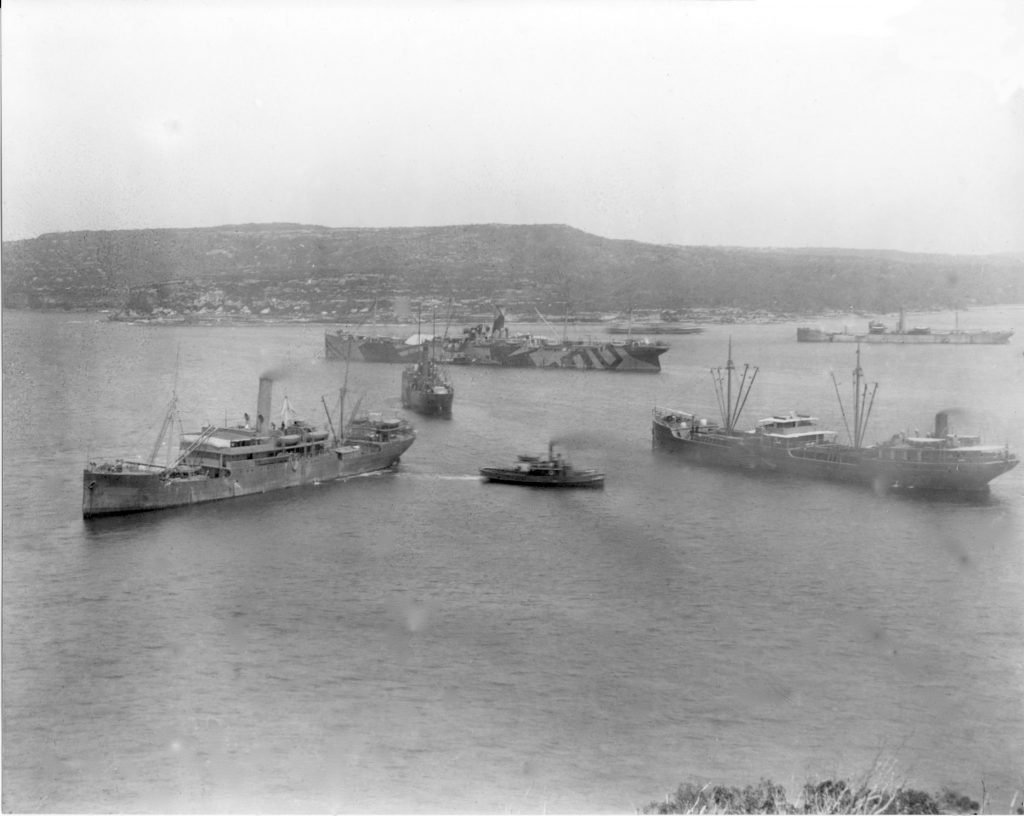
22 Nov – NSW State Cabinet meets to discuss looming troopship problem
- NSW State Cabinet requests Federal Government to evacuate Jervis Bay to allow affected ships to sail there after landing their sick at the Sydney Quarantine Station. (Evening Echo)
26 Nov – Quarantine Nurse falls ill with flu
- Background – Military Nurse, Annie Egan answered the desperate call for more staff at the Quarantine Station hospital with tragic consequences.
- Annie fell ill with influenza on 26 November and her situation deteriorated rapidly. There was a large public outcry when she was denied a priest at her death bed.
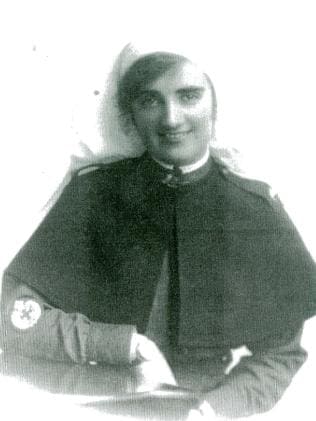
26-27 Nov – National Influenza Planning Conference held in Melbourne
- Conference attended by State Health Ministers, Director Generals of State Health departments, British Medical Association representatives and Commonwealth officials who agreed:
- a) Commonwealth Government will have responsibility for proclaiming infected States and for organising maritime and land quarantine.
- b) States will have responsibility for activating emergency hospitals, vaccination depots, ambulance services, medical staff and public awareness measures.
- c) Municipal Councils will have a key role in implementing the regulations which covered isolation, notification and medical care. Councils asked to prepare and equip local drill halls as emergency hospitals and set up inoculation stations. Richmond Council in Melbourne was not happy about this new burden of responsibility and didn’t want to play the game.
3 Dec – Military Nurse Annie Egan dies from influenza
- Annie Egan was buried with full military honours in the quarantine cemetery with her funeral service conducted by a Catholic nurse (Nurse Williams). A buglar played the last post and a firing party provided by members of the quarantined troops fired a salute. (Armidale Express, 10 Dec 1918)
17 Dec – More ships more cases and more deaths in quarantine. Bad news from South Africa
- Carawa in Fremantle – 200 cases and four deaths; Makura – one death and 11 new cases, Boones – ten deaths, 22 dangerously ill, 63 seriously ill, 109 ill and 201 convalescent. (Armidale Express)
- Half the community of Langland dead. Dead carts collecting bodies and taking them to a pit for interment as coffins are almost unprocurable. (Armidale Express)
24 Dec – Bad news from Fiji and Samoa
- In Fiji people are “dying like flies”. One cemetery buries forty people a day. In outlying areas people not buried at all.
- 6000 people have died in Samoa. (Richmond River Herald)
1919
1 Jan – No new cases or deaths at North Head Quarantine Station
- People were asking had the ‘plague menace’ ended? Eleven days with no new cases or deaths in Quarantine had officials confident the disease was beaten. (Herald)
9-10 Jan (NSW) – Some said the influenza epidemic had ended or had it?
- The Albury Banner and Wodonga Express announced the “Influenza Epidemic Ended”.
- The Daily Observer took a cautious approach saying it could still “sneak in by the side entrance” as there were still many cases overseas. The danger will come from over-confidence.
9-10 Jan (Vic) – First appearance of pneumonic flu in Melbourne but not declared
- There were about 30 cases of pneumonic influenza at Melbourne’s Base Hospital.
- NSW authorities began worrying because they had closed all inoculations depots thinking they had beaten the disease in quarantine.
15 Jan – Deaths in Italy
- Official death toll in Italy stands at 120,000. (Cumberland Argus & Fruitgrower Advocate)
24 Jan – Outbreak in Melbourne. Isolation of Victoria Probable. More infected ships.
- On learning of the outbreak the Chief Secretary of NSW, Mr Fuller contacted the Chief Quarantine officer, Dr Cumpston and Dr Robertson, Chairman of the Board of Public Health (Vic) for a statement of the facts. (Orange ‘Leader’)
- NSW Premier, Mr Holman said if the outbreak was true he would ask Acting Prime Minister, Mr Watt to proclaim Victoria an infected State which meant Victoria being isolated from all traffic. (Orange ‘Leader’)

- The NSW Health Minister urged everyone in NSW to be inoculated. (Orange ‘Leader’)
- The troopship Saxon arrived at Freemantle on Monday from England via South Africa flying the yellow flag.
25-26 Jan (Vic) – More cases of pneumonic influenza
- Six deaths from ‘pneumonic influenza’ in Melbourne.
26 Jan – Pneumonic influenza case confirmed in Randwick Military Hospital.
- Background: A returned soldier travelled to Sydney from Melbourne and developed pneumonic influenza symptoms soon after his arrival. Admitted and isolated at Randwick Military hospital doctors soon confirmed he was suffering from pneumonic influenza. (Sunday Times) Within three days three nurses who were treating the patient became infected.
27 Jan – NSW proclaimed an infected State by Federal Director of Quarantine, Dr Cumpston
- Director of Quarantine received advice from NSW’s Health Minister that the State had confirmed cases of pneumonic influenza.
- Each case history showed the disease was contracted in Melbourne, or from contact with those cases.
- Despite 156 cases of what appeared to be Spanish flu in Melbourne and surrounds, ‘expert opinion’ said the sickness was not pneumonic influenza. (reported in Armidale Express and New England General Advertiser, 28 Jan)
28 Jan – NSW closes border with Victoria. Places of public gathering closed along with other measures
- NSW closes border with Victoria not wanting anyone to leave that State without a permit from the Commonwealth Government.
- Medical patrols set up at Albury and Tocumwal to check temperatures and examine all passengers.
- Theatres, cinemas and other places of entertainment closed.
- Public schools ordered to remain closed after the Christmas holidays.
- People urged to wear masks in public.
- SOS cards prepared by the Health Department for distribution in suburbs dealing with outbreaks. Infected residents could put these cards in their windows to seek medical assistance or food.
28 Jan (Vic) – Victoria declared an infected State
- Background – If Victoria was declared infected before NSW, it meant Victoria’s border with NSW and SA would close. However with NSW already infected the Commonwealth Government could treat the adjoining states as a block (as per November 1918 agreement) and not constrain movement between them. It seems this is what Victoria was aiming for.
- Victoria was late reporting itself an infected State to the Federal Director of Quarantine to suit its own purposes.
1 Feb (Vic) – Spanish Flu? Victorians still in denial? Let’s wait and see.
- As the flu spread rapidly in Melbourne Dr McMeekin, Superintendent of Melbourne Hospital, said it was too early to tell whether it would be a widespread epidemic, identical to the cases in New Zealand or the Sydney Quarantine station.
1-2 Feb – NSW Media outlets respond angrily to Victoria’s tardiness in reporting pneumonic influenza
- Background – NSW had kept the disease within quarantine which was no mean feat with 326 cases and 49 deaths. The Victorian and Federal Government appeared to be in collusion as neither would admit influenza was spreading in Melbourne. Victorian authorities tried disguising the disease which had pneumonic symptoms calling it by another name – “influenzalpneumonia”. Some even denied the presence of pneumonic symptoms. Victoria’s procrastination and tardiness in replying to their telegrams also frustrated NSW Ministers. It seemed the Victorian Government didn’t have the same sense of urgency as other States in dealing with the influenza menace.
- The ‘Sunday Times’ declared that if a single NSW citizen dies from pneumonic influenza the responsibility will lie first with the Victorian government and then at the door of Federal Quarantine authorities.
- The ‘Sydney Methodist’ called Victoria’s inaction “culpable laxity”.
- The ‘Nepean Times’ accused Melbourne authorities of taking a “wait and see approach”.
3 Feb – Strange ‘New Age’ advice by the Medical Advisory Committee in Victoria and problems in Moonee Ponds
- The Medical Advisory Committee appointed to keep watch on the disease as it progressed in Victoria declared: “… there is no reason for any panic that fear is injurious, and cheerfulness is recommended as likely to increase resistance and prevent complications.” (Daily Observer)
- The Committee also said that ” … compared with the outbreak in England, the epidemic is on a very small scale.” (Daily Observer)
- The picture theatre at Moonee Ponds, Victoria has been the centre of a pneumonic influenza outbreak. Several deaths followed quickly after the first case. (Daily Observer, Tamworth)
6 Feb (NSW) – Victoria’s Criminal Neglect. The troopship Argyllshire berths in Sydney
- The ‘Daily Examiner’ accuses Victorian authorities of criminal neglect for failing to declare Victoria an infected State until after NSW. It said: “If the Federal capital had been situated anywhere else than in Melbourne there is reason to believe the Commonwealth attitude would have been of a different order.” (It wasn’t until 1927 that the Commonwealth Parliament met in the ‘new’ Capital of Australia, Canberra.)
- The Argyllshire with 1,150 men aboard goes into quarantine on arrival in Sydney. Background – Delays thwarted the vessel’s voyage home. In Perth a coal loaders’ strike forced the soldiers to coal their own boat. In Melbourne the men were kept on board for fours days while cargo was unloaded for local merchants. The delay in Melbourne breached Australia’s new quarantine laws and meant the ship would face quarantine on arrival in Sydney.
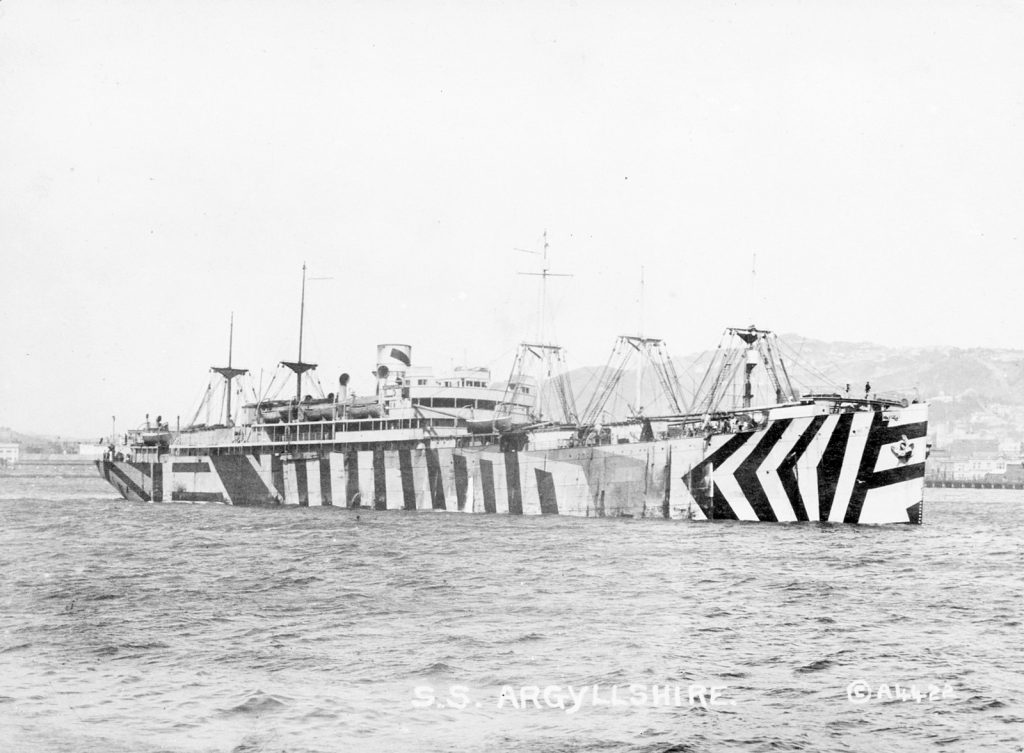
6 Feb (Vic) – Nurses sick
- Compounding the issue of medical staff shortages, nurses treating influenza patients in Victoria were succumbing to the disease. Melbourne Hospital had 36 nurses down, the Children’s Hospital and the Alfred each had 10 down and St Vincent’s 25 down.
8 Feb – NSW border towns report pneumonic influenza
- First cases appear in Albury and Deniliquin followed by Culcairn, Wagga Wagga, Junee and Holbrook.
9 Feb – Extra days in quarantine for the Argyllshire leads to unrest
- Hours before the men were due for release public health authorities discover one case of pneumonic influenza aboard meaning another four days in quarantine.
- Soon after the announcement the men were completely out of control and officers were unable to restore order. Soldiers took charge of the vessel determined to break quarantine.
- After failing to raise the anchor, they turned to the boats for a quick getaway. The men lowered three boats and quickly clamoured over the side.
- Amid comedic scenes the men made their escape with the police launch in hot pursuit.
- Two boats made land and the third was intercepted.
- By midnight 42 runaways had been recaptured and eight were still on the loose.
- Eventually all fugitives were recaptured.
10 Feb – Argyllshire troops sent to North Head Quarantine Station. Penrith reports its first case
- There was nothing prepared for the men’s arrival at the Quarantine Station. There was no cleared camp site, no tents, no sanitation, no cooking facilities, no ready water, and the area was infested with poisonous snakes.
- The men didn’t expect this homecoming after their gruelling ordeal on the Western Front battlefields.
- Penrith reports its first case of pneumonic influenza followed by Liverpool, Millthorpe, Lithgow, Orange, Lismore, Murwillumbah and Kyogle.
11 Feb – Argyllshire troops mutiny. Commonwealth Government temporarily withdraws from the November 1918 Agreement. Cooperative Federalism on the brink. Tragedy for newly weds.
- Maintaining discipline 900 angry men, wearing compulsory face masks, marched in rank out of the Quarantine Station watched on helplessly by 150 police guards. Read full story here.
- Having made their point, the Argyllshire men were re-quarantined at the Sydney Cricket Ground.
- Background – After Victoria’s delay in declaring pneumonic influenza cases other States took matters into their own hands and acted independently of the Commonwealth Government. They introduced their own border controls and arrangements for managing and containing outbreaks. Victoria shut its border with NSW and then SA. Queensland closed its border with NSW and WA closed its border with SA. Tensions were so high that WA impounded the transcontinental train.
- Newly weds William Toohey and his wife contracted the disease while honeymooning in Melbourne. William died on 6 February in Wodonga just days after he was married. (Farmer and Settler)
- Mayor of Geelong calls for all travelling to be stopped for one week. (Argus)
- Geelong High School introduces lessons by correspondence to fill the gap caused by the compulsory ‘influenza vacation’ (Argus)
12 Feb – Expert’s bewildering advice in Victoria an issue says ‘The Argus’
- Dr Robertson, Chairman of the Public Health Board, was the “protagonist of cheery optimism”
- Dr McMeekin, Superintendent of Melbourne Hospital, took a grave view of the developing situation.
13 Feb – NSW Government gazetted regulations re Influenza contacts
- New regulations approved under provisions of the Public Health Act 1902 and the Quarantine Act of 1897 in relation to the isolation of infected persons and their contacts.
14 Feb – Argyllshire men demobilised
- Valentine’s Day, was a fitting day for a homecoming, whether Australian men and women in 1919, knew it or not.
21 Feb – NSW towns want restricted travel. Some areas prepare for cases. No reception for returning soldiers. Britain’s death toll rises
- A public meeting in the northern tablelands town of Walcha, protested against unrestricted travel between Sydney and the country and called for restricted travel from affected areas. (Daily Observer, Tamworth)
- Junee wants approval from State Cabinet to isolate like Broken Hill.
- Converting from horse use to patient use. Armidale’s racecourse saddling paddock had a large marquee erected for use as an emergency influenza hospital. (Daily Observer, Tamworth)
- No formal reception for returning Tallangatta soldiers due to the epidemic. (Albury Banner and Wodonga Express)
- 175,000 deaths reported in Great Britain in three months. The deaths were largely young adults.(Armidale Express)
1 Mar – Lemons in short supply due to influenza
- Lemons were scare due to the high demand causing the Minister for Customs to approve a 10% increase on the yearly quantity imported. (SMH)
3 Mar – Lismore hit with Pneumonic influenza
- Local Lismore doctors issued a statement stating that Pneumonic influenza had broken out in Lismore. (SMH)
17 Mar – St Patrick’s Day celebrations in Sydney
- Unbelievably St Patrick’s Day celebrations attracted a large crowd in Sydney. (SMH, 24 Mar)
22-23 Mar – Eighty new cases
- Eighty new cases reported in NSW and 14 deaths. (The Age, 24 Mar)
- Evidence of a sudden rise in virulence. (The Age, 24 Mar)
29-30 Mar – 165 new cases. Sick nurses had nowhere to go.
- 165 new cases admitted to Sydney’s hospitals and death toll now 21.
- Sydney Show cancelled
- The matron of an influenza hospital put out an urgent plea for accommodation for sick nurses to convalesce as there was such a bed shortage in hospitals. (SMH, 29 Mar)
16 April – Pneumonic influenza in Wilcannia
- Pneumonic influenza in a severe form reaches Wilcannia, nearly 1000 kilometres from Sydney. (The Kyogle Examiner)
5 July – Hundreds of Pneumonic influenza cases sweeping through NSW towns
- Influenza rampant in Berry. (Shoalhaven News)
7 July – Disease spreads in NSW
- Nowra, Culcairn and Walcha have hundreds of cases between them. (SMH)
- Helensburgh has 313 cases and Broken Hill 123 cases in hospital. (SMH)
15 July – A sad and pitiful case to break your heart
- A report in the Richmond River Herald and the Northern Districts Advertiser, p3. “A few days ago the mother of three young children died of pneumonic influenza in the Armidale Hospital where her husband was also under treatment for the same disease. On visiting the stricken home a good Samaritan saw a sight pathetic in the extreme – the three little kiddies, with no one else in the house, all huddled together in a room, sobbing bitterly and piteously , calling for their dead mother.”
23 July – Nurse survives the Front but dies from Influenza at home
- Nurse Porter from Milton only recently returned from the War where she did good work as a nursing sister, died last week at the Randwick Hospital from flu. (The Shoalhaven Telegraph, 23 July 1919)
1 Aug – NSW Premier says “Epidemic Stamped Out”. Gilgandra man loses eight relatives
- The Premier thanked NSW citizens for their assistance and efforts during the epidemic.
- He singled out the women of NSW who rallied to the call ” … of their distressed sisters and brothers, with super courage and noble self-denial.”
- While the Premier spoke about the epidemic coming to an end, newspapers were reporting on more deaths in areas including Broken Hill, Temora, Armidale, Cobar and Casino. So while there were indications that the epidemic was coming to an end the disease was still taking a heavy toll in many parts of the country there were.
- Since the influenza outbreak Dick Hodges of Gilgandra has lost eight relatives and his now comprises himself and a married daughter. (The Maitland Daily)
- Soup bones were the only thing for sale in the Butchers at Tenterfield. (Armidale Express)
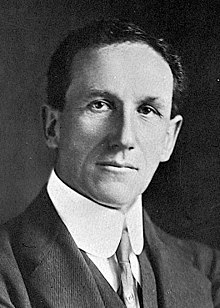
27 Sept – Last Cases of Spanish flu in NSW
- Dorrigo was the last NSW town to report an outbreak of the disease on 27 September 1919.
The Sorry Facts of Spanish Influenza in Australia
- There were three waves of the Spanish/pneumonic influenza. The first comparatively mild outbreak wave in NSW extended from 27 January 1919 to 18 March 1919; the second high mortality wave extended from 19 March 1919 to 27 May 1919; and the deadliest wave occurred between 28 May 1919 to 30 September 1919.
- The lives of millions of Australians were affected.
- More than 15,000 people died in a six month period in 1919.
- Around two million Australians were infected.
- More than 5000 marriages were affected by the loss of a partner.
- Over 5000 children lost one or both parents.
- Around 40% of Sydney’s population became infected (in 1919 the population of Sydney and the metropolitan area was 828,700). 3,902 city people died being 4.3% of the population of Sydney and 61% of the NSW population.
- The mortality rate for Sydney in 1919 was 42.6% higher than the average for the previous five years due to the influenza epidemic. (SMH, 3 Mar 1920)
- In NSW of the 22,000 reported cases, there were 6,387 deaths from influenza, pneumonic influenza and pneumonia which accounted for half the total of Australian deaths.
- Young, healthy adults were affected most. Over 52% of all deaths in NSW occurred in people aged 20 to 39 years.
- Adults between 25 and 34 years represented nearly one third of all deaths.
- More males than females were affected. Males accounted for 60% of the deaths in NSW.
- Of the total male deaths in NSW 40% were industrial workers.
- The poor and working classes were the hardest hit in terms of illness and mortality and of course financially.
- In Victoria over 4,000 entertainers, bartenders and restaurant staff were on the unemployment queues.
- NSW Government spent over £1,000,000 in relief. (Armidale Express, 1 Aug 1919). The NSW Government was far more generous than the Victorian Government with relief paid to the unemployed.
- There were an estimated 3,561 deaths in Victoria, 2,327 in Melbourne and 897 in regional areas. However these estimates probably err on the conservative side due to confusion over whether pneumonia or influenza was the cause of death.
- The mortality rate in Australia of three deaths per thousand was relatively low compared to other countries close by. New Zealand was almost six deaths per thousand while Western Samoa endured a death rate of 221.92 per thousand.
In August 1919 the disease was spreading in some areas and abating in others. By mid September the the epidemic was declared over.
With all the economic discord caused by the epidemic through factory closures, unemployment, strikes and public health expenditure the Australian economy actually grew 1.7% in 1918-19.
